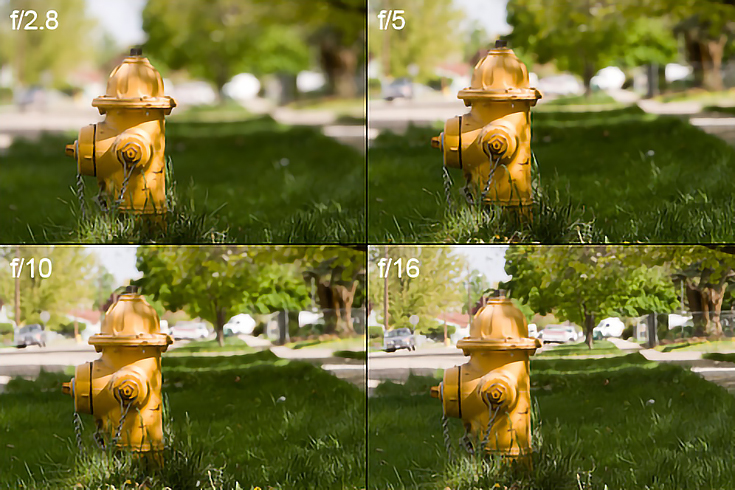
If you move the mode to Bulb, you’ll be able to make much longer exposures than 30 seconds with the assistance of a remote cable release.Īs a general rule of thumb, you will want to choose a lower f-stop to allow enough light to pass through the camera.
#F STOP SETTINGS ISO#
You may need to increase your ISO to accommodate for the low light, but otherwise, just make adjustments to your shutter speed if required, leaving the f-stop in creative control of the scene. Your f-stop is dependent on whether you want a tack sharp image front-to-back or if you’re focusing on something in particular. You’ll need a tripod, as making a long exposure is almost guaranteed in low light.

#F STOP SETTINGS MANUAL#
This is why low light and night photography can be extremely challenging, and rewarding.įor low light scenes, you’ll most likely have to work in Manual Mode to adjust exposure settings without the restriction of any semi-automated modes. Low light has a knack of removing your creative control because you need a low f-stop to brighten the image enough for a decent exposure, regardless of whether you want a shallow depth of field or not. Summary: An f-stop specifies the aperture of a lens as determined by the focal length of the lens divided by the diameter of the aperture. And if someone’s discussing a small or high aperture, they’re referring to anything between f/8 and f/22. So, if someone’s discussing large or low aperture, they’re referring to an f-stop such as f/2 – f/5.6. If you’re using a 50mm lens, then an f-stop of f/2 means the aperture diameter is 25mm, or close to an inch. If you’re using a 100mm lens, then your aperture or f-stop of f/8 (1/8th) means the actual width of your aperture opening is 12.5mm. f/8 represents 1/8th (one-eighth), f/4 represents 1/4th (one-quarter) and f/2 represents 1/2 (one-half). Need a quick refresher on aperture? Click here.Īlthough the little ‘f’ doesn’t stand for fraction, it does stand for focal length, because aperture is measured in fractions relative to the focal length of your lens.Īnytime you think about aperture from now on, think about it as a fraction of your lens focal length. Regardless, f/2, f2 and F2 are all the same and indicate that aperture is written as a fraction. The distance in front of and behind the focus point that appears to be in focus is referred to as “depth of field.Have you seen the ‘f’ that appears before a number somewhere on your camera’s display or in the viewfinder? Often it will appear with a forward slash or even as a standalone capital.

The higher the f-number, the greater the distance in front of and behind the focus point that appears to be in focus on the other hand, the lower the f-number, the shorter the distance in front of and behind the focus point that appears to be in focus.

For example, changing the aperture from f/4 to f/5.6 halves the amount of light passing through the lens and halves the brightness of the image that falls on the image sensor.Ĭhanging the f-number also changes the distance in front of or behind the focus point that appears to be in focus. The higher the f-number, the smaller the aperture and the less light that passes through the lens the lower the f-number, the larger the aperture and the more light that passes through the lens. It is expressed as an f-number (written as “f/” followed by a number), such as f/1.4, f/2, f/2.8, /f4, f/5.6, f/8, f/11, f/16, f/22, or f/32.Ĭhanging the f-number changes the size of the aperture, changing the amount of light that passes through the lens. Aperture controls the brightness of the image that passes through the lens and falls on the image sensor.


 0 kommentar(er)
0 kommentar(er)
